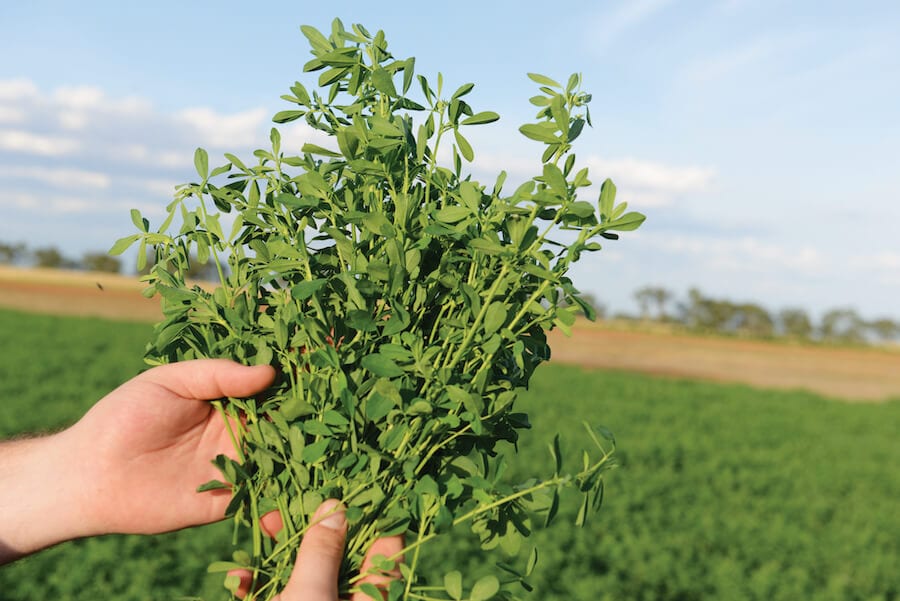Overview
The Lucerne Feed Quality Trial was conducted with the aim of assessing the standing forage quality of various commercial lucerne varieties as two-year-old stands. The trial took place from May 25, 2015, with three replicates sown for each variety.
The focus was on evaluating forage yield, crude protein (CP) percentage, metabolizable energy (ME) as megajoules per kilogram (MJ/kg) of dry matter (DM), and digestibility characteristics. The trial was irrigated and treated as a high production trial, aiming for multiple cuts per year.
Relative Feed Value (RFV)
Calculation and Results
The trial calculated the RFV of each lucerne variety, which serves as an index value to rank the feed based on potential digestible dry matter intake. The RFV is determined by comparing the digestible dry matter using the percentage of acid detergent fibre (ADF) with the dry matter intake estimate using the percentage of neutral detergent fibre (NDF).
The RFV does not consider the percentage of CP or other nutrient factors but provides a reliable indicator of forage quality in terms of digestibility. Varieties such as Q31 Lucerne and Q75 Lucerne demonstrated their high-quality traits and maintained higher RFV values due to their excellent leaf holding characteristics.
Impact of Mechanical
Harvesting on RFV
The trial noted that the RFV values obtained from fresh cut pasture samples before mechanical hay making differ from those obtained after the haymaking process. Varieties with better leaf holding traits, such as Q31 Lucerne, exhibited higher RFV values due to minimal leaf loss during mechanical harvesting.
It is important to consider the impact of mechanical losses, ranging from eight to 45 percent, when targeting high-quality lucerne hay. The ability of green cut lucerne to retain its leaf in the bale significantly affects the overall quality of the hay. Q31 Lucerne demonstrated excellent leaf retention, making it a suitable choice for premium quality hay production.
Summary
The Lucerne Feed Quality Trial evaluated the forage quality of various commercial lucerne varieties, considering factors such as RFV, CP percentage, ME values, and digestibility characteristics.
The trial highlighted the importance of selecting lucerne cultivars with high leaf holding capacity, as demonstrated by Q31 Lucerne, to achieve higher RFV values and superior hay quality.
The findings provide valuable insights for farmers and hay producers aiming to optimize forage quality and select suitable lucerne varieties for their specific requirements.
